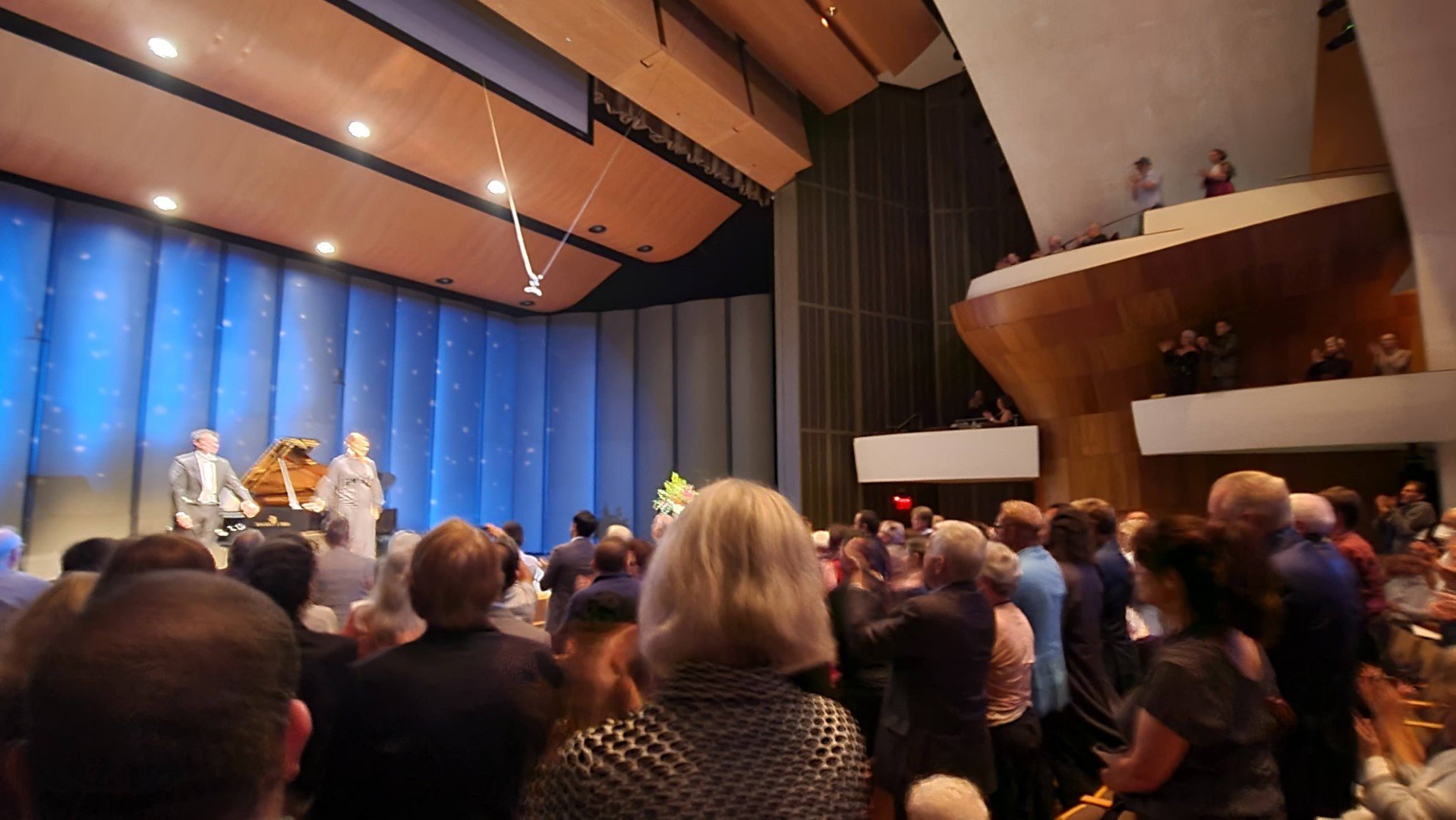Soprano Lise Davidsen in Santa Monica, a Big Debut in a Small Hall
/By Truman C. Wang
9/19/2023
On Sunday, September 17, Norwegian soprano Lise Davidsen made her U.S. West Coast debut in the 537-seat Broadstage of the Santa Monica College. The small hall, lovely as it is for other music, could barely contain the voice of such amplitude, resulting in harmonic distortion of major portions at full-throttled singing from where I was sitting in left orchestra. (Why hadn’t anyone at the much larger Dorothy Chandler Pavilion snapped her up first?)
Overlooking the acoustical oversaturation issue, one must appreciate the utter uniqueness of Davidsen’s voice, and the masterful manner in which she wielded it, both as a mighty sword and as a soft painter’s brush, in essaying a diverse program of lieder and arias in four languages and across three distinct vocal categories: lyric, lyric-dramatic, and heroic.
I will start by discussing her heroic soprano voice, as it is what excites people the most and presumably where her future lies: in the big Wagnerian roles (and possibly others as well – Salome, Abigail, Turandot). Many have compared Davidsen to her great predecessor Birgit Nilsson, but I would beg to differ and go back further in time, and compare her to another Norwegian, Kirsten Flagstad (1895-1962), whose outsized dramatic soprano voice retained a strong element of the mezzo or contralto in the tone – similar to Davidsen’s. Manon’s “Sola, perduta, abbandonata” and Fidelio’s “Abscheulicher” showed a razor-sharp and penetrating voice, never brutish, that could shift gear seamlessly from thrilling high notes to soft pianissimo in a span of a few notes. Davidsen herself might think her voice unsuited for Schubert, but her reading of the “Earl King”, perhaps the composer’s most operatic song, was filled with vivid imageries and transfiguring power.
At the opposite end of the vocal spectrum, Davidsen’s lyric singing in “Ave Maria” was lovely, ending pianissimo with a lovingly controlled slow ascending scale. Similarly, Schubert’s “Litany” was given a radiantly soft reading in mezza voce (or more accurately, in one-fifth tone that still filled the hall!)
The operatic arias of Verdi, as well as the songs of Grieg and Sibelius, planted firmly in the mid-range of the vocal spectrum. In “Morrò, ma prima in grazia”, Davidsen’s lyric-dramatic singing showed pathos and nuanced expression, and in “Pace, Pace mio Dio”, the messa di voce, the gradual swell and decrescendo, on the opening F natural, was faultlessly executed. It must be noted that Davidsen’s is a unmistakably Nordic voice, not laden with warm overtones or morbidezza in the old-school Italian style of a Ponselle or a Muzio; however, it can convey drama and emotion as well as the best of them.
Unexpectedly, the 36-year-old soprano showed her humorous, witty, delightful side one doesn’t get to see in an opera house, speaking about her musical selections, and grooving to the operetta song of Kalman (“Heia, heia in dem Bergen”) and Lerner and Loewe’s “I Could Have Danced All Night”. She gave three encores: a heart-stopping “Vissi d’arte”, an ecstatic “Cäcilie” and a sublime “Morgen”.
James Baillieu, the pianist, was a superb accompanist, fielding the orchestral task in Wagner’s “Dich teure Halle” like a champ, and elsewhere played with sensitivity in complete rapport with Davidsen.
So, there we have it: a soprano with three voices who knows how to shift gear like the world’s best Formula 1 race car driver, despite an all too small racetrack, leaving all competition disappearing in her rearview mirror. Here’s hoping she will make her mainstage opera debut on the West Coast soon.
Truman C. Wang is Editor-in-Chief of Classical Voice, whose articles have appeared in the Pasadena Star-News, San Gabriel Valley Tribune, other Southern California publications, as well as the Hawaiian Chinese Daily. He studied Integrative Biology and Music at U.C. Berkeley.




